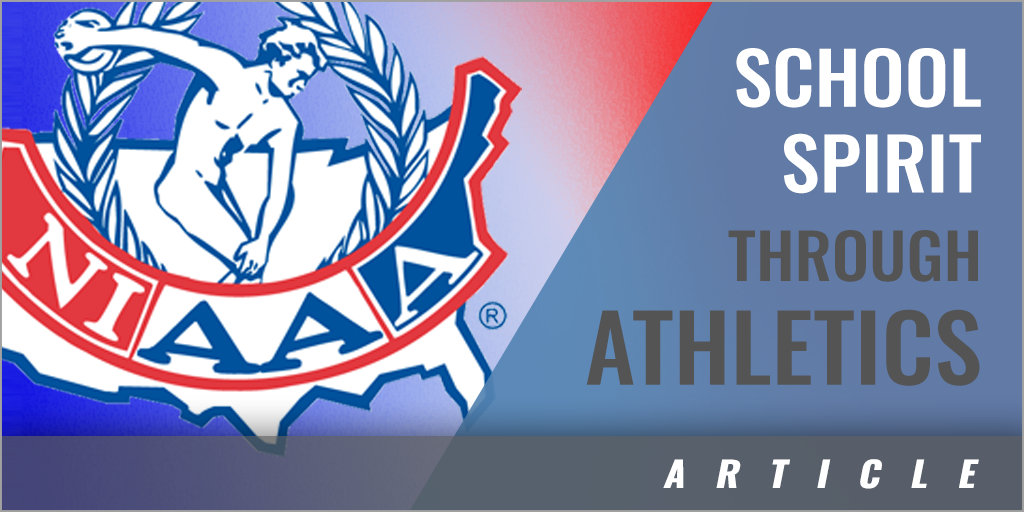|
By: Todd Parham, CMAA - American Community School in Amman, Jordan After having worked as an international athletic administrator in four schools, four countries, on three continents over the past 19 years, one thing remains the same. Usually, there is a need to increase school spirit, or in some cases there’s a need to develop school spirit to begin with. In my experiences in international schools, academics are king while the performing arts, after-school activities, and sports take a back seat to student academic life. I’m not saying this is a bad thing, it's just simply different from where I grew up in Northern California some 30-plus years ago. This focus on academics, I believe, is one of the main reasons schools are lacking in school spirit. As international activities and athletic administrators, we often find ourselves in the unusual position of being the only person in the building doing our specific job, so bouncing ideas off colleagues can be difficult. Having connections with other athletic administrators is vital, and I can speak from personal experience how important professional development conferences like the National Athletic Directors Conference (NADC), the East Asia Regional Council of Overseas Schools (EARCOS) Leadership Conferences, and the International Association of Athletic Administrators and Coaches (IAAAC) are in creating and maintaining these connections. Through these connections and professional development, I’ve been able to assemble a toolkit of ideas, systems, activities, and programs that have helped me to build school spirit to bridge the gap between academics and athletics. A dear friend of mine, and a legend in the EARCOS region, Steve Doleman once told me “The key to establishing a successful athletic program is to help students and their parents embrace the concept of balancing their academics and their after-school activities.” Taking what I’ve learned and the resources I’ve assembled, over the years I’ve been able to help international schools build, and in some cases rebuild, school spirit through athletics. For most of our international school student-athletes, the main reason they play sports is to have fun, and having fun in and around sports events helps build that school spirit of being an Eagle, a Phoenix, a Panther, or even a Scorpion. I’ve found through high-school student-leadership organizations like the RIS Athletic Leadership Club, ACS Scorpion Spirit Squad, SAS Activities Council’s planning Friday Night Lights, and Thursday Night Lights here in the Middle East, celebrations which bring the entire school community together to cheer for their school team goes a long way in building school spirit. In addition to the traditional Friday Night Lights or Thursday Night Lights evening home games, these student-leadership organizations in international schools add in sign making, face painting stations, photo booths with the school mascots, and raffles for school swag. In addition to student-leadership, I organize halftime competitions with school swag prizes, local food trucks to sell food, and work with the boosters to hold bake sales to provide food on campus during the games. I’ve found bringing in local food vendors is an easy way to increase crowd sizes, it also has the impact of supporting local businesses and increasing our ties to the local community. In working with the Boosters, the money raised from the bake sales is then reinvested into the school athletics program. Before game night rolls around we hold the traditional high school pep rallies and school spirit days to bring attention to all our hard-working and dedicated student-athletes in a leadup to the big game. In addition to school spirit activities, I have also found that developing a school-wide sports uniform policy that has all age groups wear a common uniform for the sport creates ties between the youngest students and our varsity athletes. So, a third-grader can support his big sister on the day of the big game by going to school wearing the same basketball uniform as his big sister. The continuity of seeing the common uniform helps students to feel pride in their school, their sport, and themselves. We also bring out the school mascot to greet students and staff as they enter the school. At the end of each season, we assemble all the student-athletes in their uniforms to celebrate the season. This celebration starts with all the student-athletes from eight-year-olds to seniors in high school in a parade of athletes held in front of the entire school. The excitement of the introductions of the teams and seeing all the student-athletes assembled together has a great impact on increasing student interest in school sports programs and in turn increases school spirit. Giving the same attention to the younger student-athletes, as well as the superstars is another way to build school spirit through the school athletics program. With increased interest in school sports programs comes greater overall enrollment numbers of new eager and spirited student-athletes for limited roster spots. To solve this problem I’ve always been a strong believer in no-cut programs where additional teams are created to accommodate the increased number of student-athletes. This, however, comes with the additional costs associated with creating more teams and more often than not some very creative scheduling. Administration and financial support are key to designing no-cut programs which allow anyone that wants to play the opportunity to play. School administrators can also assist the no-cut programs by actively recruiting teachers who are willing to coach. Setting a clear expectation that teachers are required to contribute beyond their contracted hours goes a long way to fostering school spirit. Additional limiting factors could be the lack of qualified coaches to meet the increased demand. One way I found to relieve this pressure on the existing coaching staff is the use of high school student coaches. I have successfully implemented this in elementary basketball and soccer programs, utilizing one or two paid coaches, and adding in two, three, four, or sometimes even five student coaches to help run the program to ensure that all students get to participate who want to participate. In the end, we need to create meaningful opportunities for students to participate in school-sponsored athletic programs. This can help our student's growth and development at all levels, abilities, and ages in an open, supportive, and dynamic environment. |







